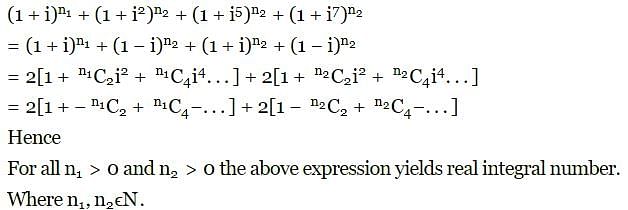CAT Mock Test - 14 (November 16) - CAT MCQ
30 Questions MCQ Test Daily Test for CAT Preparation - CAT Mock Test - 14 (November 16)
Directions: The passage below is accompanied by a set of questions. Choose the best answer to each question.
Professor Amartya Sen, the eminent economist and the Noble Laureate in Economics (1998), in his espoused theory of welfare economy, emphasized that in many underdeveloped countries like India, the state should play an important and increasingly varied role of economic development today. There are four general arguments, all of them related, for state participation in economic development. First, the entrance requirements in terms of financial capital and capital equipment are very large in certain industries, and the size of these obstacles will serve as barriers to entry on the part of private investors. One can imagine that these obstacles are imposing in industries such as steel production, automobiles, electronics, and parts of the textile industry. In addition, there are what Myint calls technical indivisibilities in social overhead capital. Public utilities, transport, communication and other infra-structural facilities must be in place before industrial development can occur, and they do not lend themselves to small-scale improvements.
A related argument centers on the demand side of economy. This economy is seen as fragmented, disconnected, and incapable of inputs from other parts of the economy. Consequently, economic activity in one part of the economy does not generate the dynamism in other sectors that is expected in more cohesive economics. Industrialization necessarily involves many different sectors; economic enterprises will thrive best in an environment in which they draw on inputs from related economic sectors and, in turn, release their own goods for industrial utilization within their own economics.
A third argument concerns the low-level equilibrium trap in which less developed countries find themselves. At subsistence levels, societies consume exactly what they produce. There is no remaining surplus for investment. As per-capita income rises, however the additional income will not be used for savings and investment. Instead, it will have the effect of increasing the population that will eat up the surplus and force the society to its former subsistence position. Fortunately, after a certain point, the rate of population growth will decrease; economic growth will intersect with and eventually outstrip population growth. The private sector, however, will not be able to provide the one-shot large dose of capital to push economic growth beyond those levels where population increases eat up the incremental advances.
The final argument concerns the relationship between delayed development and the state. Countries wishing to industrialize today have more competitors, and these competitors occupy a more differentiated industrial terrain than previously. This means that the available niches in the international system are more limited. For today's industrializers, therefore, the process of industrialization cannot be a haphazard affair, nor can the pace, content, direction be left solely to market forces. Part of the reason for a strong state presence, then, relates specifically to the competitive international environment in which modern countries and firms must operate.
Q. Which of the following best states the central point of the passage?
A related argument centers on the demand side of economy. This economy is seen as fragmented, disconnected, and incapable of inputs from other parts of the economy. Consequently, economic activity in one part of the economy does not generate the dynamism in other sectors that is expected in more cohesive economics. Industrialization necessarily involves many different sectors; economic enterprises will thrive best in an environment in which they draw on inputs from related economic sectors and, in turn, release their own goods for industrial utilization within their own economics.
A third argument concerns the low-level equilibrium trap in which less developed countries find themselves. At subsistence levels, societies consume exactly what they produce. There is no remaining surplus for investment. As per-capita income rises, however the additional income will not be used for savings and investment. Instead, it will have the effect of increasing the population that will eat up the surplus and force the society to its former subsistence position. Fortunately, after a certain point, the rate of population growth will decrease; economic growth will intersect with and eventually outstrip population growth. The private sector, however, will not be able to provide the one-shot large dose of capital to push economic growth beyond those levels where population increases eat up the incremental advances.
The final argument concerns the relationship between delayed development and the state. Countries wishing to industrialize today have more competitors, and these competitors occupy a more differentiated industrial terrain than previously. This means that the available niches in the international system are more limited. For today's industrializers, therefore, the process of industrialization cannot be a haphazard affair, nor can the pace, content, direction be left solely to market forces. Part of the reason for a strong state presence, then, relates specifically to the competitive international environment in which modern countries and firms must operate.
Directions: The passage below is accompanied by a set of questions. Choose the best answer to each question.
Professor Amartya Sen, the eminent economist and the Noble Laureate in Economics (1998), in his espoused theory of welfare economy, emphasized that in many underdeveloped countries like India, the state should play an important and increasingly varied role of economic development today. There are four general arguments, all of them related, for state participation in economic development. First, the entrance requirements in terms of financial capital and capital equipment are very large in certain industries, and the size of these obstacles will serve as barriers to entry on the part of private investors. One can imagine that these obstacles are imposing in industries such as steel production, automobiles, electronics, and parts of the textile industry. In addition, there are what Myint calls technical indivisibilities in social overhead capital. Public utilities, transport, communication and other infra-structural facilities must be in place before industrial development can occur, and they do not lend themselves to small-scale improvements.
A related argument centers on the demand side of economy. This economy is seen as fragmented, disconnected, and incapable of inputs from other parts of the economy. Consequently, economic activity in one part of the economy does not generate the dynamism in other sectors that is expected in more cohesive economics. Industrialization necessarily involves many different sectors; economic enterprises will thrive best in an environment in which they draw on inputs from related economic sectors and, in turn, release their own goods for industrial utilization within their own economics.
A third argument concerns the low-level equilibrium trap in which less developed countries find themselves. At subsistence levels, societies consume exactly what they produce. There is no remaining surplus for investment. As per-capita income rises, however the additional income will not be used for savings and investment. Instead, it will have the effect of increasing the population that will eat up the surplus and force the society to its former subsistence position. Fortunately, after a certain point, the rate of population growth will decrease; economic growth will intersect with and eventually outstrip population growth. The private sector, however, will not be able to provide the one-shot large dose of capital to push economic growth beyond those levels where population increases eat up the incremental advances.
The final argument concerns the relationship between delayed development and the state. Countries wishing to industrialize today have more competitors, and these competitors occupy a more differentiated industrial terrain than previously. This means that the available niches in the international system are more limited. For today's industrializers, therefore, the process of industrialization cannot be a haphazard affair, nor can the pace, content, direction be left solely to market forces. Part of the reason for a strong state presence, then, relates specifically to the competitive international environment in which modern countries and firms must operate.
Q. The author suggests all of the following as appropriate roles for the state in economic development EXCEPT:
A related argument centers on the demand side of economy. This economy is seen as fragmented, disconnected, and incapable of inputs from other parts of the economy. Consequently, economic activity in one part of the economy does not generate the dynamism in other sectors that is expected in more cohesive economics. Industrialization necessarily involves many different sectors; economic enterprises will thrive best in an environment in which they draw on inputs from related economic sectors and, in turn, release their own goods for industrial utilization within their own economics.
A third argument concerns the low-level equilibrium trap in which less developed countries find themselves. At subsistence levels, societies consume exactly what they produce. There is no remaining surplus for investment. As per-capita income rises, however the additional income will not be used for savings and investment. Instead, it will have the effect of increasing the population that will eat up the surplus and force the society to its former subsistence position. Fortunately, after a certain point, the rate of population growth will decrease; economic growth will intersect with and eventually outstrip population growth. The private sector, however, will not be able to provide the one-shot large dose of capital to push economic growth beyond those levels where population increases eat up the incremental advances.
The final argument concerns the relationship between delayed development and the state. Countries wishing to industrialize today have more competitors, and these competitors occupy a more differentiated industrial terrain than previously. This means that the available niches in the international system are more limited. For today's industrializers, therefore, the process of industrialization cannot be a haphazard affair, nor can the pace, content, direction be left solely to market forces. Part of the reason for a strong state presence, then, relates specifically to the competitive international environment in which modern countries and firms must operate.
Directions: The passage below is accompanied by a set of questions. Choose the best answer to each question.
Professor Amartya Sen, the eminent economist and the Noble Laureate in Economics (1998), in his espoused theory of welfare economy, emphasized that in many underdeveloped countries like India, the state should play an important and increasingly varied role of economic development today. There are four general arguments, all of them related, for state participation in economic development. First, the entrance requirements in terms of financial capital and capital equipment are very large in certain industries, and the size of these obstacles will serve as barriers to entry on the part of private investors. One can imagine that these obstacles are imposing in industries such as steel production, automobiles, electronics, and parts of the textile industry. In addition, there are what Myint calls technical indivisibilities in social overhead capital. Public utilities, transport, communication and other infra-structural facilities must be in place before industrial development can occur, and they do not lend themselves to small-scale improvements.
A related argument centers on the demand side of economy. This economy is seen as fragmented, disconnected, and incapable of inputs from other parts of the economy. Consequently, economic activity in one part of the economy does not generate the dynamism in other sectors that is expected in more cohesive economics. Industrialization necessarily involves many different sectors; economic enterprises will thrive best in an environment in which they draw on inputs from related economic sectors and, in turn, release their own goods for industrial utilization within their own economics.
A third argument concerns the low-level equilibrium trap in which less developed countries find themselves. At subsistence levels, societies consume exactly what they produce. There is no remaining surplus for investment. As per-capita income rises, however the additional income will not be used for savings and investment. Instead, it will have the effect of increasing the population that will eat up the surplus and force the society to its former subsistence position. Fortunately, after a certain point, the rate of population growth will decrease; economic growth will intersect with and eventually outstrip population growth. The private sector, however, will not be able to provide the one-shot large dose of capital to push economic growth beyond those levels where population increases eat up the incremental advances.
The final argument concerns the relationship between delayed development and the state. Countries wishing to industrialize today have more competitors, and these competitors occupy a more differentiated industrial terrain than previously. This means that the available niches in the international system are more limited. For today's industrializers, therefore, the process of industrialization cannot be a haphazard affair, nor can the pace, content, direction be left solely to market forces. Part of the reason for a strong state presence, then, relates specifically to the competitive international environment in which modern countries and firms must operate.
Q. According to the passage, the low-level equilibrium trap in underdeveloped countries results from
A related argument centers on the demand side of economy. This economy is seen as fragmented, disconnected, and incapable of inputs from other parts of the economy. Consequently, economic activity in one part of the economy does not generate the dynamism in other sectors that is expected in more cohesive economics. Industrialization necessarily involves many different sectors; economic enterprises will thrive best in an environment in which they draw on inputs from related economic sectors and, in turn, release their own goods for industrial utilization within their own economics.
A third argument concerns the low-level equilibrium trap in which less developed countries find themselves. At subsistence levels, societies consume exactly what they produce. There is no remaining surplus for investment. As per-capita income rises, however the additional income will not be used for savings and investment. Instead, it will have the effect of increasing the population that will eat up the surplus and force the society to its former subsistence position. Fortunately, after a certain point, the rate of population growth will decrease; economic growth will intersect with and eventually outstrip population growth. The private sector, however, will not be able to provide the one-shot large dose of capital to push economic growth beyond those levels where population increases eat up the incremental advances.
The final argument concerns the relationship between delayed development and the state. Countries wishing to industrialize today have more competitors, and these competitors occupy a more differentiated industrial terrain than previously. This means that the available niches in the international system are more limited. For today's industrializers, therefore, the process of industrialization cannot be a haphazard affair, nor can the pace, content, direction be left solely to market forces. Part of the reason for a strong state presence, then, relates specifically to the competitive international environment in which modern countries and firms must operate.
Directions: Read the passage and answer the question based on it.
Among the cryptic stories everyone knows since childhood, the myth of Atlantis is probably one of the most thrilling and mysterious ones. The idea of a huge continent lying underwater, once inhabited by a supposedly ingenious civilisation is intriguing on its own, and the numerous hints and clues that Atlantis was a real place make archaeologists, historians, and adventurers across the globe seek for its remains with enviable enthusiasm. Still, the myth of Atlantis is controversial and debated, and there are numerous theories regarding where it was located, which people inhabited it, and why this civilisation disappeared.
Before the 19th century, Atlantis was more of a myth romantic seekers of truth tried to prove; however, in 1882, Ignatius Donnelly published a book titled ''Atlantis, the Antediluvian'' World; in this manuscript, he proved that Atlantis was not a mere legend crafted by Plato, but could be a historical reality. Donnelly believed there must have been an incredibly advanced ancient civilisation that invented metallurgy, agriculture, astronomy, and so on, and from which other, less sophisticated civilisations must have had inherited knowledge and technologies. He also believed that Atlantis was located right where Plato described: near the Pillars of Hercules by the Straits of Gibraltar; the Atlantic Ocean's ''shifting waters,'' as he called it, sank the continent on which Atlantis was located. Continental plate tectonics shows that Donnelly's theory is incorrect, but it happened to be extremely tenacious, so even nowadays many people believed Atlantis to have existed right where Plato said it did. This theory also inspired other people to start looking for Atlantis, spawning dozens of newer speculations. One of them belongs to Charles Berlitz, an author who mostly wrote about various paranormal phenomena. Berlitz claimed that Atlantis sank in the infamous Bermuda Triangle. Obviously, none of these theories stands up to criticism, but they still remain popular.
A more realistic explanation of the emergence of the image of Atlantis is offered by a professor of classics at Bard College in Annandale, James Romm. He believes that Atlantis was a metaphor introduced by Plato to illustrate his philosophical concepts. Romm says that Plato ''was dealing with a number of issues, themes that run throughout his work. The myth about Atlantis could be an illustration of Plato's ideas about a utopian state. Besides, there is more proof that Atlantis must have been a metaphor rather than a historic reality.
So far, it is still not clear whether Atlantis existed or not. Romantics believe it did, continuing to invent new theories, clinging to a few unreliable theories introduced in the past; modern science, however - oceanography, in particular - proves them wrong. The most credible explanation of Atlantis is that it must have been Plato's metaphor illustrating his philosophical concepts; advocating a utopian society. Plato described a prosperous civilisation which fell the victim of its own greediness, immorality, and corruption; in this regard, the legend of Atlantis makes perfect sense.
Q. According to the passage, which of the following statements is closest to Berlitz's claim about Atlantis?
Directions: Read the passage and answer the question based on it.
Among the cryptic stories everyone knows since childhood, the myth of Atlantis is probably one of the most thrilling and mysterious ones. The idea of a huge continent lying underwater, once inhabited by a supposedly ingenious civilisation is intriguing on its own, and the numerous hints and clues that Atlantis was a real place make archaeologists, historians, and adventurers across the globe seek for its remains with enviable enthusiasm. Still, the myth of Atlantis is controversial and debated, and there are numerous theories regarding where it was located, which people inhabited it, and why this civilisation disappeared.
Before the 19th century, Atlantis was more of a myth romantic seekers of truth tried to prove; however, in 1882, Ignatius Donnelly published a book titled ''Atlantis, the Antediluvian'' World; in this manuscript, he proved that Atlantis was not a mere legend crafted by Plato, but could be a historical reality. Donnelly believed there must have been an incredibly advanced ancient civilisation that invented metallurgy, agriculture, astronomy, and so on, and from which other, less sophisticated civilisations must have had inherited knowledge and technologies. He also believed that Atlantis was located right where Plato described: near the Pillars of Hercules by the Straits of Gibraltar; the Atlantic Ocean's ''shifting waters,'' as he called it, sank the continent on which Atlantis was located. Continental plate tectonics shows that Donnelly's theory is incorrect, but it happened to be extremely tenacious, so even nowadays many people believed Atlantis to have existed right where Plato said it did. This theory also inspired other people to start looking for Atlantis, spawning dozens of newer speculations. One of them belongs to Charles Berlitz, an author who mostly wrote about various paranormal phenomena. Berlitz claimed that Atlantis sank in the infamous Bermuda Triangle. Obviously, none of these theories stands up to criticism, but they still remain popular.
A more realistic explanation of the emergence of the image of Atlantis is offered by a professor of classics at Bard College in Annandale, James Romm. He believes that Atlantis was a metaphor introduced by Plato to illustrate his philosophical concepts. Romm says that Plato ''was dealing with a number of issues, themes that run throughout his work. The myth about Atlantis could be an illustration of Plato's ideas about a utopian state. Besides, there is more proof that Atlantis must have been a metaphor rather than a historic reality.
So far, it is still not clear whether Atlantis existed or not. Romantics believe it did, continuing to invent new theories, clinging to a few unreliable theories introduced in the past; modern science, however - oceanography, in particular - proves them wrong. The most credible explanation of Atlantis is that it must have been Plato's metaphor illustrating his philosophical concepts; advocating a utopian society. Plato described a prosperous civilisation which fell the victim of its own greediness, immorality, and corruption; in this regard, the legend of Atlantis makes perfect sense.
Q. Which of the following options best summarises the main idea of the passage?
Directions: Read the following passage and answer the question.
Great emotional and intellectual resources are demanded in quarrels; stamina helps, as does a capacity for obsession. But no one is born a good quarreler; the craft must be learned. There are two generally recognized apprenticeships. First, and universally preferred, is a long childhood spent in the company of fractious siblings. After several years of rainy afternoons, brothers and sisters develop a sure feel for the tactics of attrition and the niceties of strategy so necessary in first-rate quarrelling.
The only child, or the child of peaceful or repressed households, is likely to grow up failing to understand that quarrels, unlike arguments, are not about anything, least of all the pursuit of truth. The apparent subject of a quarrel is a mere pretext, the real business is the quarrel itself.
Essentially, adversaries in a quarrel are out to establish or rescue their dignity. Hence the elementary principle: anything may be said. The unschooled, probably no less quarrelsome by inclination than anyone else, may spend an hour with knocking heart, sifting the consequences of calling this old acquaintance a lying fraud, 'Too late?' with a cheerful wave the old acquaintance has left the room.
Those who miss their first apprenticeship may care to enrol in the second, the bad marriage. This can be perilous for the neophyte; the mutual intimacy of spouses makes them at once more vulnerable and more dangerous in attack. Once sex is involved, the stakes are higher all round. And there is an unspoken rule that those who love, or have loved, one another are granted a license for unlimited beastliness such as is denied to mere sworn enemies. For all that, some of our most tenacious black belt quarrellers have come to it late in life and mastered every throw, from the Crushing Silence to the Gloating Apology, in less than ten years of marriage.
A quarrel may last years. Among brooding types with time on their hands like writers, half a lifetime is not uncommon. In its most refined form, a quarrel may consist of the participants not talking to each other. They will need to scheme laboriously to appear in public together to register their silence. Brief, violent quarrels are also known as rows. In all cases the essential ingredient remains the same; the original cause must be forgotten as soon as possible. From here on, dignity, pride, self-esteem, honour are the crucial issues, which is why quarrelling, like jealousy, is an all-consuming business, virtually a profession. For the quarreller's very self-hood is on the line. To lose an argument is a brief disappointment, much like losing a game of tennis; but to be crushed in a quarrel…rather bite off your tongue and spread it at your opponent's feet.
Q. According to the author, unschooled quarrelers are said to be at a disadvantage because
Directions: Read the following passage and answer the question.
Great emotional and intellectual resources are demanded in quarrels; stamina helps, as does a capacity for obsession. But no one is born a good quarreler; the craft must be learned. There are two generally recognized apprenticeships. First, and universally preferred, is a long childhood spent in the company of fractious siblings. After several years of rainy afternoons, brothers and sisters develop a sure feel for the tactics of attrition and the niceties of strategy so necessary in first-rate quarrelling.
The only child, or the child of peaceful or repressed households, is likely to grow up failing to understand that quarrels, unlike arguments, are not about anything, least of all the pursuit of truth. The apparent subject of a quarrel is a mere pretext, the real business is the quarrel itself.
Essentially, adversaries in a quarrel are out to establish or rescue their dignity. Hence the elementary principle: anything may be said. The unschooled, probably no less quarrelsome by inclination than anyone else, may spend an hour with knocking heart, sifting the consequences of calling this old acquaintance a lying fraud, 'Too late?' with a cheerful wave the old acquaintance has left the room.
Those who miss their first apprenticeship may care to enrol in the second, the bad marriage. This can be perilous for the neophyte; the mutual intimacy of spouses makes them at once more vulnerable and more dangerous in attack. Once sex is involved, the stakes are higher all round. And there is an unspoken rule that those who love, or have loved, one another are granted a license for unlimited beastliness such as is denied to mere sworn enemies. For all that, some of our most tenacious black belt quarrellers have come to it late in life and mastered every throw, from the Crushing Silence to the Gloating Apology, in less than ten years of marriage.
A quarrel may last years. Among brooding types with time on their hands like writers, half a lifetime is not uncommon. In its most refined form, a quarrel may consist of the participants not talking to each other. They will need to scheme laboriously to appear in public together to register their silence. Brief, violent quarrels are also known as rows. In all cases the essential ingredient remains the same; the original cause must be forgotten as soon as possible. From here on, dignity, pride, self-esteem, honour are the crucial issues, which is why quarrelling, like jealousy, is an all-consuming business, virtually a profession. For the quarreller's very self-hood is on the line. To lose an argument is a brief disappointment, much like losing a game of tennis; but to be crushed in a quarrel…rather bite off your tongue and spread it at your opponent's feet.
Q. According to the writer, quarrels between married couples may be
Directions: Read the following passage and answer the question.
Great emotional and intellectual resources are demanded in quarrels; stamina helps, as does a capacity for obsession. But no one is born a good quarreler; the craft must be learned. There are two generally recognized apprenticeships. First, and universally preferred, is a long childhood spent in the company of fractious siblings. After several years of rainy afternoons, brothers and sisters develop a sure feel for the tactics of attrition and the niceties of strategy so necessary in first-rate quarrelling.
The only child, or the child of peaceful or repressed households, is likely to grow up failing to understand that quarrels, unlike arguments, are not about anything, least of all the pursuit of truth. The apparent subject of a quarrel is a mere pretext, the real business is the quarrel itself.
Essentially, adversaries in a quarrel are out to establish or rescue their dignity. Hence the elementary principle: anything may be said. The unschooled, probably no less quarrelsome by inclination than anyone else, may spend an hour with knocking heart, sifting the consequences of calling this old acquaintance a lying fraud, 'Too late?' with a cheerful wave the old acquaintance has left the room.
Those who miss their first apprenticeship may care to enrol in the second, the bad marriage. This can be perilous for the neophyte; the mutual intimacy of spouses makes them at once more vulnerable and more dangerous in attack. Once sex is involved, the stakes are higher all round. And there is an unspoken rule that those who love, or have loved, one another are granted a license for unlimited beastliness such as is denied to mere sworn enemies. For all that, some of our most tenacious black belt quarrellers have come to it late in life and mastered every throw, from the Crushing Silence to the Gloating Apology, in less than ten years of marriage.
A quarrel may last years. Among brooding types with time on their hands like writers, half a lifetime is not uncommon. In its most refined form, a quarrel may consist of the participants not talking to each other. They will need to scheme laboriously to appear in public together to register their silence. Brief, violent quarrels are also known as rows. In all cases the essential ingredient remains the same; the original cause must be forgotten as soon as possible. From here on, dignity, pride, self-esteem, honour are the crucial issues, which is why quarrelling, like jealousy, is an all-consuming business, virtually a profession. For the quarreller's very self-hood is on the line. To lose an argument is a brief disappointment, much like losing a game of tennis; but to be crushed in a quarrel…rather bite off your tongue and spread it at your opponent's feet.
Q. Which of the following best states the difference between a quarrel and an argument as described by the author in the passage?
Directions: Answer the question based on the following passage.
Emile Durkheim, the first person to be formally recognised as a sociologist and the most scientific of the pioneers, conducted a study that stands as a research model for sociologists today. His investigation of suicide was, in fact, the first sociological study to use statistics. In Suicide (1964, originally published in 1897) Durkheim documented his contention that some aspects of human behaviour - even something as allegedly individualistic as suicide - can be explained without reference to individuals.
Like all of Durkheim's work, suicide must be viewed within the context of his concern for social integration. Durkheim wanted to see if suicide rates within a social entity (for example, a group, organisation, or society) are related to the degree to which individuals are socially involved (integrated and regulated). Durkheim described three types of suicide: egoistic, anomic and altruistic. Egoistic suicide is promoted when individuals do not have sufficient social ties. Since single (never married) adults, for example, are not heavily involved with family life, they are more likely to commit suicide. On the other hand, altruistic suicide is more likely to occur when social integration is too strong. The ritual suicide of Hindu widows on their husbands' funeral pyres is one example. Military personnel, trained to lay down their lives for their country, provide another illustration.
Durkheim's third type of suicide - anomic suicide increases when the social regulation of individuals is disrupted. For example, suicide rates increase during economic depression. People who suddenly find themselves without a job or without hope of finding one are more prone to kill themselves. Suicide may also increase during periods of prosperity. People may loosen their social ties by taking new jobs, moving to new communities, or finding new mates. Using data from the government population reports of several countries (much of it from the French Government Statistical Officer), Durkheim found strong support for his line of reasoning. Suicide rates were higher among single than married people, among military personnel than civilians, among divorced than married people, and among people involved in nation-wide economic crises.
It is important to realise that Durkheim's primary interest was not in the empirical (observable) indicators he used such as suicide rates among military personnel, married people, and so forth. Rather, Durkheim used the following indicators to support several of his contentions: (1) Social behaviour can be explained by social rather than psychological factors; (2) Suicide is affected by the degree of integration and regulation within social entities; and (3) Since society can be studied scientifically, sociology is worthy of recognition in the academic world. Durkheim was successful on all three counts.
Q. Ritual suicide of Hindu widows on their husbands' funeral pyres was
Directions: Answer the question based on the following passage.
Emile Durkheim, the first person to be formally recognised as a sociologist and the most scientific of the pioneers, conducted a study that stands as a research model for sociologists today. His investigation of suicide was, in fact, the first sociological study to use statistics. In Suicide (1964, originally published in 1897) Durkheim documented his contention that some aspects of human behaviour - even something as allegedly individualistic as suicide - can be explained without reference to individuals.
Like all of Durkheim's work, suicide must be viewed within the context of his concern for social integration. Durkheim wanted to see if suicide rates within a social entity (for example, a group, organisation, or society) are related to the degree to which individuals are socially involved (integrated and regulated). Durkheim described three types of suicide: egoistic, anomic and altruistic. Egoistic suicide is promoted when individuals do not have sufficient social ties. Since single (never married) adults, for example, are not heavily involved with family life, they are more likely to commit suicide. On the other hand, altruistic suicide is more likely to occur when social integration is too strong. The ritual suicide of Hindu widows on their husbands' funeral pyres is one example. Military personnel, trained to lay down their lives for their country, provide another illustration.
Durkheim's third type of suicide - anomic suicide increases when the social regulation of individuals is disrupted. For example, suicide rates increase during economic depression. People who suddenly find themselves without a job or without hope of finding one are more prone to kill themselves. Suicide may also increase during periods of prosperity. People may loosen their social ties by taking new jobs, moving to new communities, or finding new mates. Using data from the government population reports of several countries (much of it from the French Government Statistical Officer), Durkheim found strong support for his line of reasoning. Suicide rates were higher among single than married people, among military personnel than civilians, among divorced than married people, and among people involved in nation-wide economic crises.
It is important to realise that Durkheim's primary interest was not in the empirical (observable) indicators he used such as suicide rates among military personnel, married people, and so forth. Rather, Durkheim used the following indicators to support several of his contentions: (1) Social behaviour can be explained by social rather than psychological factors; (2) Suicide is affected by the degree of integration and regulation within social entities; and (3) Since society can be studied scientifically, sociology is worthy of recognition in the academic world. Durkheim was successful on all three counts.
Q. The approach of Emile Durkheim can be termed scientific on all of the following counts, except
Directions: The four sentences (labelled 1, 2, 3, and 4) below, when properly sequenced, would yield a coherent paragraph. Decide on the proper sequencing of the order of the sentences and key in the sequence of the four numbers as your answer.
1. The process of regulating calcium is accomplished by calcium pumps, channels, and binding proteins, allowing the background concentration of calcium within the cell to remain low.
2. The primary consideration behind these mechanisms is the tight regulation of the calcium concentration gradient and calcium's role as a cofactor for many enzymes.
3. By maintaining a low nano-molar concentration, even minor increases in calcium levels can result in a relatively large change in the calcium concentration gradient, resulting in a variety of cell activities.
4. As a player in cellular signaling, calcium presents a role in regulating intracellular processes such as muscle contraction, nerve impulse signaling, cell fluid balance, and more.
Directions: There is a sentence that is missing in the paragraph below. Look at the paragraph and decide in which blank (option 1, 2, 3, or 4) the following sentence would best fit.
Sentence: This could widen the energy access gap between wealthy and developing economies.
Paragraph: But as with all major scientific advancements, it is important to temper excitement with realism. __(1)__. In theory, the abundance of hydrogen in the atmosphere means nuclear fusion can produce as much clean energy as the world needs. But throughout history, such breakthroughs have far too often served to deepen - rather than reduce - disparities. __(2)__. Not many nations will have the resources to scale up the success of what has been attempted in the US. There is no reason to believe that nations that succeed will share their technological knowhow with countries that are poorer or have less sophisticated scientific establishments. ___(3)___. If countries use fusion to develop a new generation of devastating weapons, it could spark a dangerous new arms race. __(4)__. Like the sun itself, the power of fusion must be a source of life, available to rich and poor alike.
Directions: The four sentences (labelled 1, 2, 3, and 4) below, when properly sequenced, would yield a coherent paragraph. Decide on the proper sequencing of the order of the sentences and key in the sequence of the four numbers as your answer.
1. Absent divine agency, the types of agents whose intentions are relevant for the status of anything as natural, are human agents.
2. When applied to humans, this concept of nature picks out human features that are not the results of human intentional action.
3. If the entire cosmos is taken to be the product of divine agency, then as Plato argued, conceptualisations of the cosmos as natural in this sense are mistaken.
4. Thus understood, human nature is the set of human features or processes that remain after subtraction of those picked out by concepts of the non-natural, concepts such as 'culture', 'nurture', or 'socialisation'.
Directions: Read the following passage and answer the question that follows.
Exactly six players - Hagen, Adolf, Tavon, Pablo, Vale and Arlen - participate in Dart Club Championship. In one game, only two players can participate at once, where they have to hit the target maximum number of times in given duration of time. For every target hit, the player gets $10. Also, each player plays against each of the other players exactly once. No game ends in a draw, and in each game, the winning player earns exactly $10 more than the losing player.
The following table provides the amount earned by (AF) and the amount earned against (AA) each player:

Q. Against which of the following players did Tavon win a game?
Directions: Read the following passage and answer the question that follows.
Exactly six players - Hagen, Adolf, Tavon, Pablo, Vale and Arlen - participate in Dart Club Championship. In one game, only two players can participate at once, where they have to hit the target maximum number of times in given duration of time. For every target hit, the player gets $10. Also, each player plays against each of the other players exactly once. No game ends in a draw, and in each game, the winning player earns exactly $10 more than the losing player.
The following table provides the amount earned by (AF) and the amount earned against (AA) each player:

Q. Against which of the following players did Arlen lose a game?
Directions: Read the following passage and answer the question that follows.
Exactly six players - Hagen, Adolf, Tavon, Pablo, Vale and Arlen - participate in Dart Club Championship. In one game, only two players can participate at once, where they have to hit the target maximum number of times in given duration of time. For every target hit, the player gets $10. Also, each player plays against each of the other players exactly once. No game ends in a draw, and in each game, the winning player earns exactly $10 more than the losing player.
The following table provides the amount earned by (AF) and the amount earned against (AA) each player:

Q. How many games were won by Adolf?
Directions: Study the following information carefully and answer the question.
In a bustling city, a renowned art gallery proudly displays a collection of certain exquisite paintings. These masterpieces can be classified into two categories: contemporary art and classical art. Some of these paintings are the creations of local artists, while others originated from international talents. Each painting in this collection possesses a particular artistic style, categorised as either abstract or realistic or combination of both.
The following facts are also known:
(i) The numbers of contemporary paintings and classical paintings are in the ratio 2 : 1.
(ii) 90 of the contemporary paintings are abstract and originated from international talents.
(iii) Classical paintings do not have combination of abstract and realistic.
(iv) There are total 170 international paintings, out of which 40 are combination of abstract and realistic, which is half of realistic contemporary paintings originated locally.
(v) There are 195 realistic paintings, 45 of which are classical and 105 are local.
Q. If there are 20 paintings of contemporary art which are only realistic and originated from local talents, then what can be the minimum number of paintings of contemporary art which are combination of both and which originated from local talents?
Directions: Study the following information carefully and answer the question.
In a bustling city known for its thriving tech industry, three talented sales professionals, Alex, Emma, and Liam, were entrusted with the task of promoting an innovative software solution called LinkPro to various businesses. Each week, they were assigned different territories to cover. Once a sales professional enters in a particular territory, he can meet any number of businessmen and any businessman can buy any number of software or may not buy any software. The success rate of a sales professional for a week is defined as the ratio of the number of software sold to the number of businessmen visited in that week. Some details about their performances are given below:
(i) Over the course of two weeks, the number of businessmen visited by Alex, Emma and Liam are in the ratio 2 : 5 : 4, however each of them sold 80 software.
(ii) Emma's success rate for week-1 is 2/3 but Alex's success rate for the same week is 7/3, however altogether, all the three visited 81 businessmen in week-1.
(iii) Emma sold 56 software in week-2.
(iv) Alex visited 10 more businessmen in week-2 than week-1. However all the sales professionals visited more number of businessmen in week-2 as compared to week-1.
(v) Liam visited the number of businessmen in week-1 and week-2 in the ratio 3 : 5 and sold software in the ratio 1 : 3.
Q. Find the ratio of number of businessmen visited by Alex and Emma in week-1 to number of businessmen visited by Emma in week-2.
A tank has two pipes connected with it, one inlet and the other an outlet pipe. The outlet pipe can empty the tank in 7 hours, when the inlet pipe is closed. When the tank is full, and the inlet pipe is also open the tank is emptied in 12 hours. If the inlet pipe's inflow into the tank is at the rate of 5 liters per hour, then what is the capacity of the tank?
The interior angles of a polygon are in A.P., such that the smallest angle is 120 degrees, and the common difference is of 5 degrees. Find the number of sides in the polygon?
The number of positive integers less than 175 that are relatively prime to 3, 5, 7 is?
How many factors of 840 are multiples of 5 but not of 8?
The number of groups of three or more distinct numbers that can be chosen from 1, 2, 3, 4, 5, 6, 7 and 8 so that the groups always include 3 and 5, while 7 and 8 are never included together is
Amal purchases some pens at ₹ 8 each. To sell these, he hires an employee at a fixed wage. He sells 100 of these pens at ₹ 12 each. If the remaining pens are sold at ₹ 11 each, then he makes a net profit of ₹ 300, while he makes a net loss of ₹ 300 if the remaining pens are sold at ₹ 9 each. The wage of the employee, in INR, is
The school running track has six lanes, each a metre wide. The track is rectangular in shape with curved edges in the form of quarter circle, if the race starts along the straight side of the rectangle, then how far forward should the runner in the outside lane start if the runners are to complete a one lap race fairly? (Take π = 22/7)
In triangle ABC, angle ABC is a right angle. The length of segment BD = 8 cm, BE = 6 cm, AE = 10 cm and CD = 10 cm. Find the area of quadrilateral BDOE.
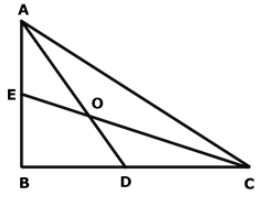
There is a question statement which is followed by two statements A and B. You have to decide whether the information provided in the two statements is sufficient for answering the question.
What is the sum of square of all the roots of the equation x4 + ax3 + cx2 +dx + e?
(A) e = 89
(B) All the roots are integers.
A family has 4 earning members P, Q, R, S. In 2011 their respective shares in the total income was 25%, 35%, 10%, 30% respectively. They spend 40% of the total income and save the remaining. In 2012 P's salary went up by 20%, Q's salary increased 20% and R's salary decreased by 10% and S's salary decreased by 20%. In 2012 what percent of total family income should they spend to save same amount as in 2011?
For positive integers n1,n2 the value of the expression.

Four octagonal die (each having faces 1-8) are thrown together. What is the total number of ways in which the sum of the numbers obtained on the dice is 25?
|
152 docs|327 tests
|



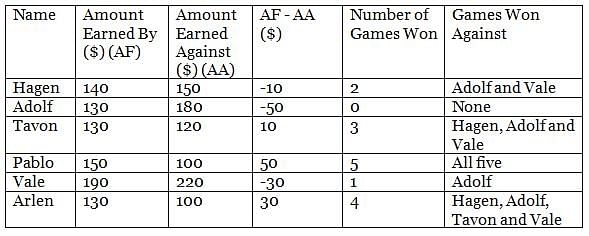
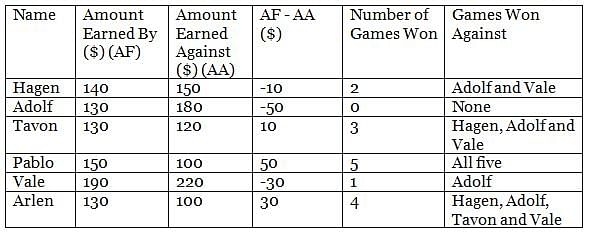
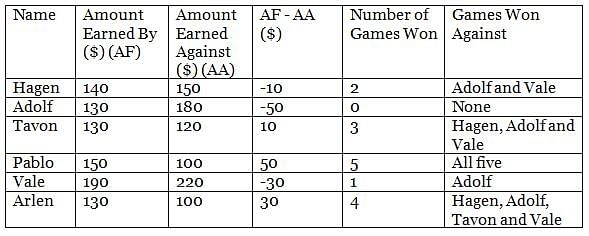








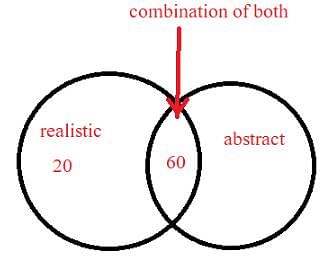

 × 80 = 20
× 80 = 20 × 80 = 60
× 80 = 60 × 4x =
× 4x = 
 × 4x =
× 4x =





 = 81
= 81





